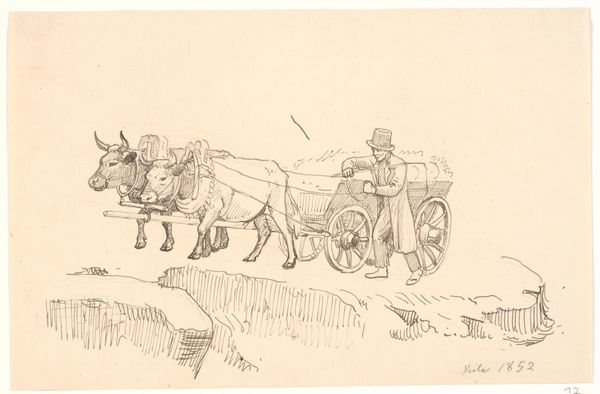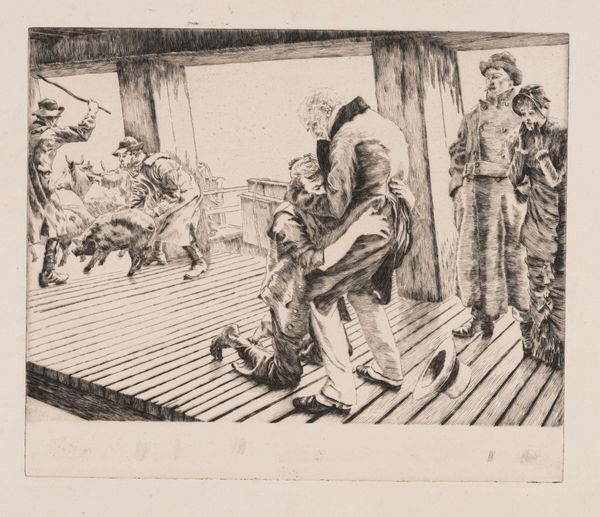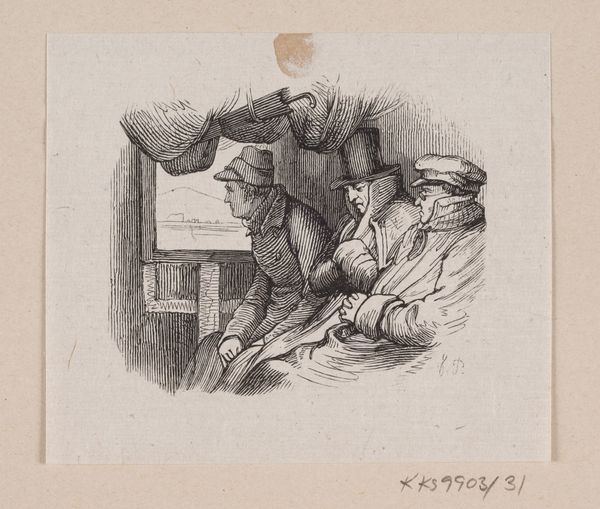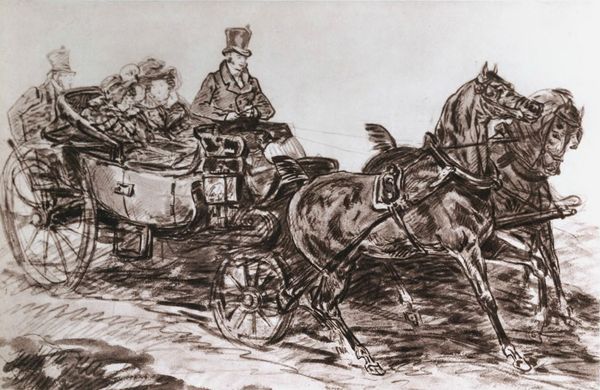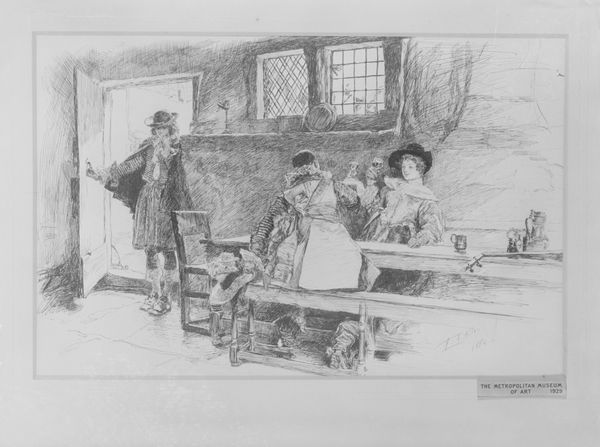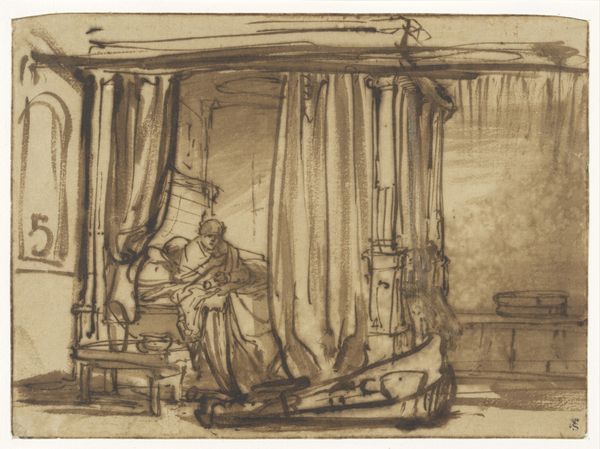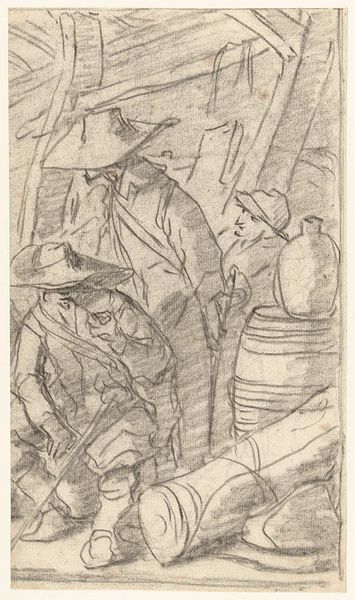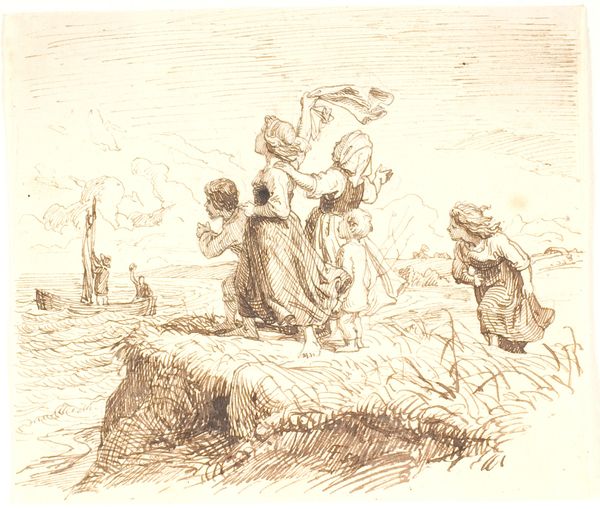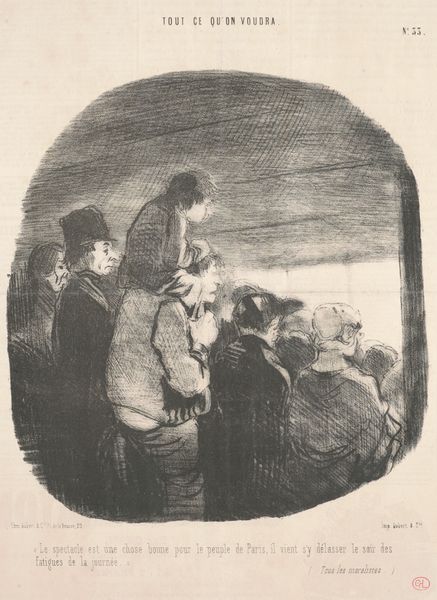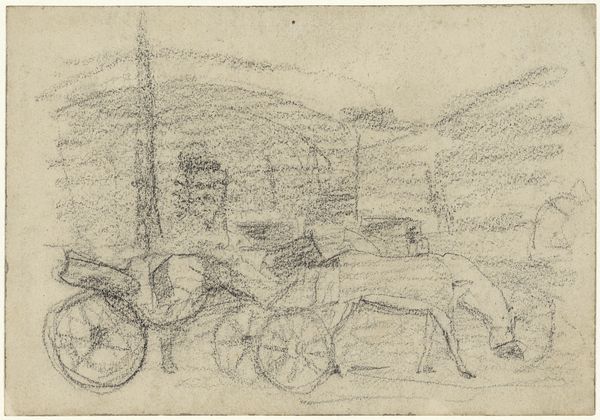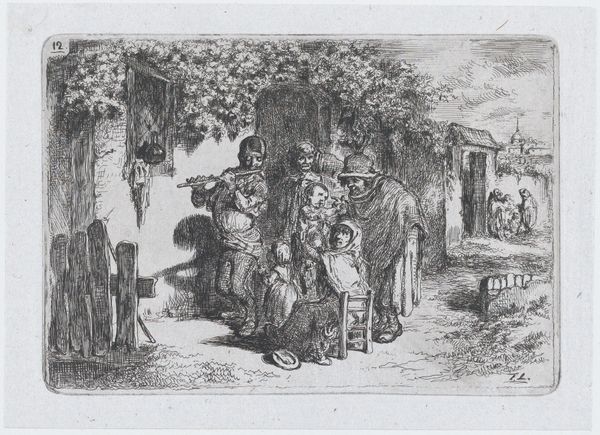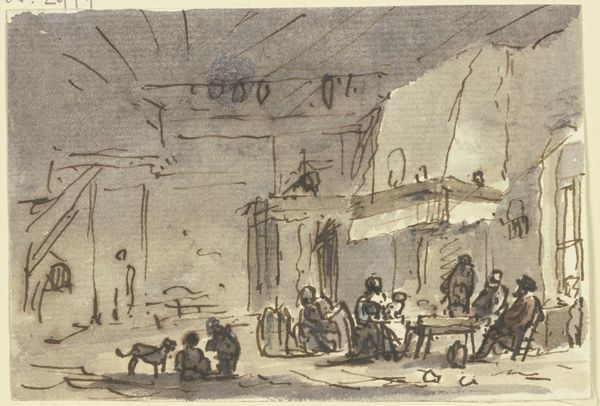
drawing, lithograph, print, graphite
#
drawing
#
lithograph
# print
#
caricature
#
cartoon sketch
#
romanticism
#
graphite
#
cityscape
#
genre-painting
Copyright: National Gallery of Art: CC0 1.0
Editor: Okay, next up is “Allons donc… que diable cocher…” a lithograph drawing by Honoré Daumier from 1843. It depicts figures crammed inside a carriage, and there seems to be a dramatic event unfolding in the background, suggested by flying objects. It’s quite busy! What do you notice first about this piece? Curator: Immediately, I see the lithographic process at play. Look at how Daumier utilizes the greasy crayon on the stone to create those varied tones and textures. Notice how he employs that technique to illustrate not just the *what* but the *how*—the means of transportation and the socio-economic class divisions inherent in 19th-century Paris. Editor: So you're focusing on the technical aspects, like the lithography itself. But doesn’t the drawing style itself—almost cartoonish—play a role? Curator: Absolutely, but consider the purpose of that style! Daumier wasn't just creating art; he was producing images for mass consumption, images designed to critique power. This lithograph, like his others, likely appeared in a satirical journal. The "cartoonish" style is deliberate – a tool for broad social commentary. Consider how the very materials of mass media were used to challenge the elite represented *within* the image. Editor: That makes sense. So the material – the print – directly impacted the message? Curator: Precisely. And who has access to such imagery? Who is being excluded from that access? To truly understand this lithograph, you must acknowledge that every choice in the process informs and enriches our comprehension. It gives insight into labor, materiality and social status, as well as to its consumers. Editor: Fascinating. I hadn't thought about the printing process itself as being so integral to understanding its message, but it definitely shapes my interpretation. Thanks for pointing that out! Curator: It's often the overlooked elements, like materials and means of distribution, that reveal the most profound truths about a work of art and its context.
Comments
No comments
Be the first to comment and join the conversation on the ultimate creative platform.
